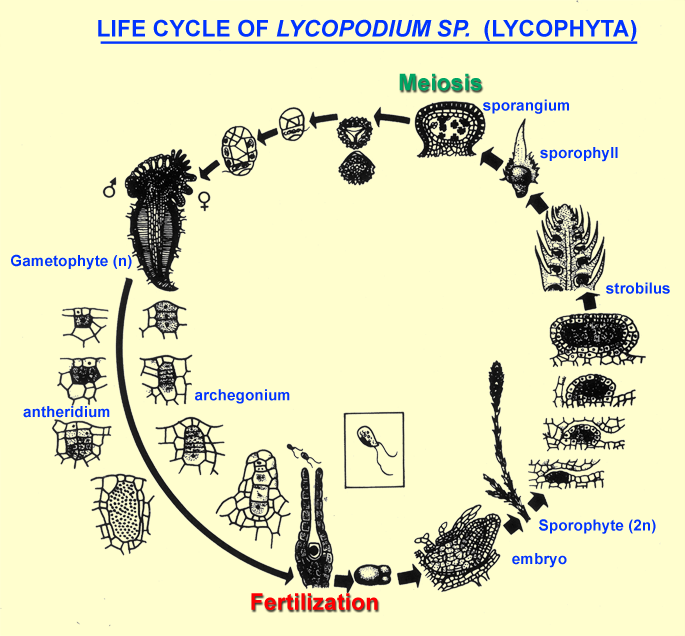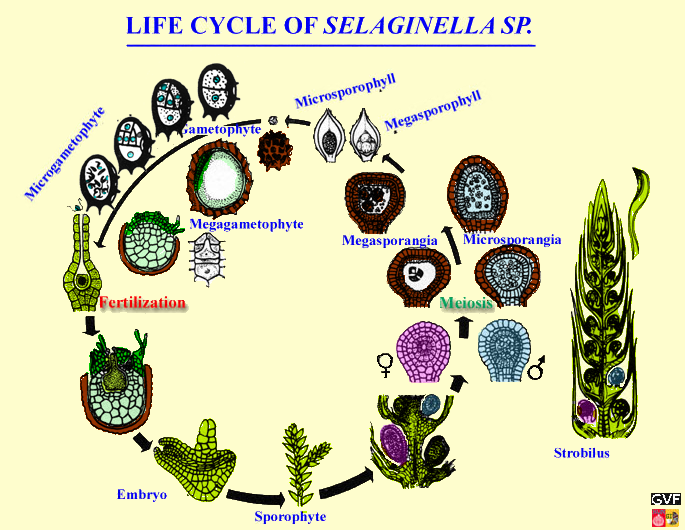The Lycophyta, to which Lycopodium (Clubmoss) and Selaginella (Spikemoss) belong, have vascular bundles for the transport of water, minerals and sugars. Thanks to these veins they can become bigger than mosses. The Lycophyta possess small microphyll leaves (microphyll = with a single, unbranched vascular bundle) arranged in a spiral.
 |
A Lycopodium (Drents Friese Wold); photo: Wilhelm Benus. See zoom view and video (@14min33)
B and C Selaginella habitat; zoom view |
Characteristics of the life cycle
The strobilus is at the apex of the stem. The sporophylles look all alike and are arranged in a compact spiral. In most cases the sporangia, like in Lycopodium, which produce identical spores, are formed on the sporophylle. This phenomenon is called homospory. These spores grow into the gametophyte on which antheridia and archegonia are formed. Also heterospory occurs in the Lycophyta, for example in Selaginella. Two types of sporangia develop on the sporophylls: macrosporangia (female sporangia) on the lower sporophylls and microsporangia (male sporangia) on the upper sporophylls. The sporangia are located in the so-called ligula, which are small lingular, chlorophyll-lacking scale at the upperside of the base of the sporophylls.
The prothallium is club-shaped. The development of the microprothallium begins already at the stage that the microspore is still located inside the microsporangium. The entire process is completed within the compartment of the spore. This is also true for the early development of the macroprothallium, but eventually the wall of the spore disrupts while rhizoids and the archegonia with egg cell continue to grow.
Life cycle of Lycopodium
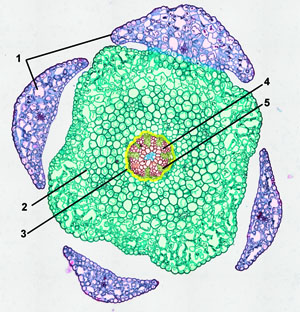 | 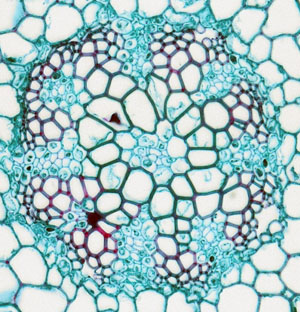 |
Elements of a cross-section at the level of the stem of Lycopodium: leaves (at the perifery) and in the stem proper the central cylinder (inside the yellow marks), phloem (yellow-greenish), xylem vessels (reddish colorized).(zoom)
Detail of the central cylinder of Lycopodium with vascular bundles: xylem and phloem. (zoom) |
Life cycle of Selaginella
 | 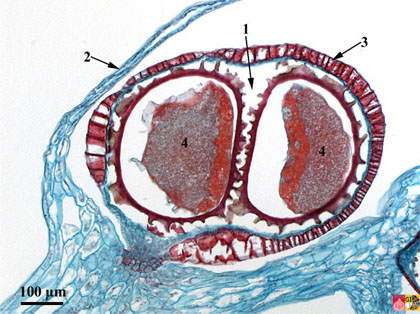 |
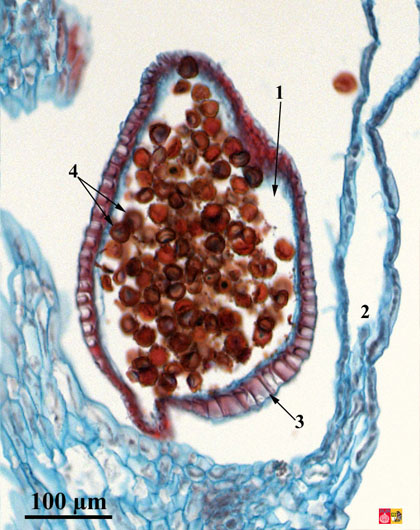 |
Longitudinal section through a strobilus of Spikemoss. The strobilus has two types of sporangia and is heterosporous. After meiosis haploid microspores are formed in the microsporangia and haploid macrospores in the macrosporangia. These spores will lead respectively to a male and a female gametophyte.
1 strobilus axis, 2 scale, 3 microsporangium, 4 macrosporangium | Cross-section through a macrosporangium of selaginella.
1 macrosporangium, 2 scale, 3 sporangium wall, 4 macrosporen |
Doorsnede door een microsporangium van Engels mos
1 microsporangium, 2 scale, 3 sporangium wall, 4 microspores. (Detail of microsporangium zoom) |


